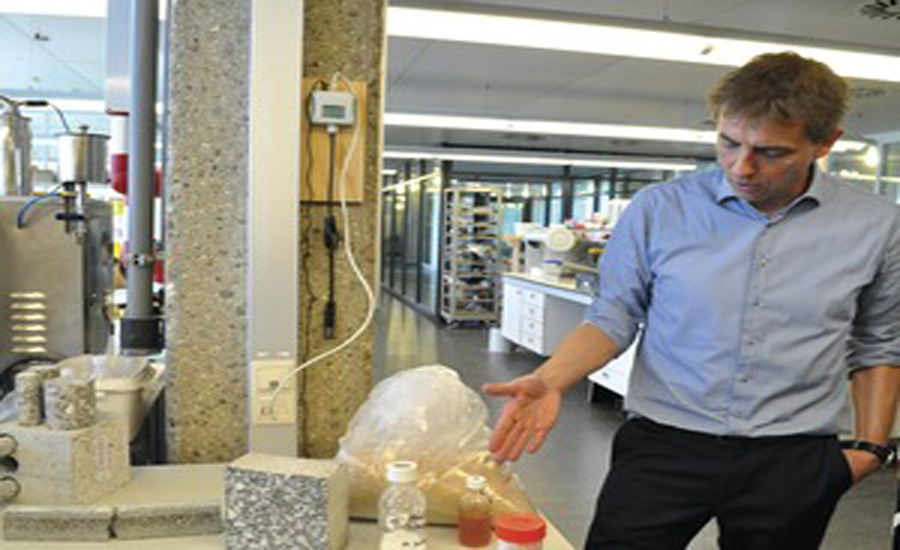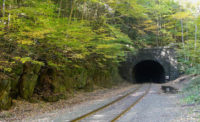Jonkers shows self-healing concrete at his lab in the Netherlands. The bacteria-based technology costs more to produce than conventional materials but promises to extend the life of concrete structures.
The non-scientific term used by a leading microbiologist to describe his cure for cracked concrete is: "limestone-pooping bacteria."
Henk Jonkers, a professor at Delft University of Technology in the Netherlands, has patented a mixture containing bacteria that, when exposed to water, produces calcium carbonate that fills microcracks in concrete. So-called self-healing concrete could extend the life span of concrete structures by 30%, saving labor and repair costs while reducing waste associated with cement production.
In the past year, Delft researchers have applied the concept to irrigation canals in Ecuador and a parking garage in the Netherlands. Civil structures prone to small cracks—less than a millimeter—are the best candidates for this technology, which prevents water, chlorides and other corrosive elements from damaging structures' underlying supports, scientists say. But the concrete's longer duration comes at a cost premium, and researchers can't guarantee the bacteria will respond as predicted decades into the future.
Multiple studies have proven self-healing bacteria's promise in laboratories. Professors from the University of Texas at Austin and Northwestern Polytechnical University published a 2014 paper that showed self-healing mortar outperformed its control counterpart in strength and ultrasonic wave velocity tests. They compared samples at seven and 28 days, but Jonkers said his team hypothesizes that bacteria will live for decades, based on tests and field samples that found dormant bacteria in 200-year-old soil.
Longevity isn't the only hurdle. The self-healing agent adds about 50% to the cost of a cubic meter of concrete in the Netherlands. During a visit to his lab in May, Jonkers told ENR that contractors are wary of the price. "Every contractor will say, 'This is impossible, and I can never sell this to my customer,' " he said.
But, he went on, concrete is only about 1% of total construction cost, so contractors can highlight the long-term cost reductions to building owners, who will recoup the initial premium in three to four years through reduced labor costs.
With this premium, self-healing concrete likely will be used for structures that are difficult to repair, such as tunnels and bridges, experts suggest. But agencies that oversee civil structures are "notoriously conservative," notes Leo Argiris, Arup Chemical's principal structural engineer. "They're usually concerned about long-term performance of their projects, and they're not necessarily rewarded for taking risks," he says. Still, he thinks self-healing concrete could be viable in as little as five years.
Others, such as Steve Kosmatka, Portland Cement Association's vice president of research and technical services, think adoption could take up to two decades. "The more exotic [the technology] is, the longer it takes," Kosmatka says.
Even so, last November Jonkers' team crafted a company from multiple patents to test and market the technology. Named Green Basilisk, after the lizard that can walk on water, the company also touts the technology as a repair mortar and as a liquid spray for smaller surface touch-ups. The firm licenses the technology and is in talks with several multinational companies, Jonkers said. The liquid spray will be available to the U.S. by September.




Post a comment to this article
Report Abusive Comment